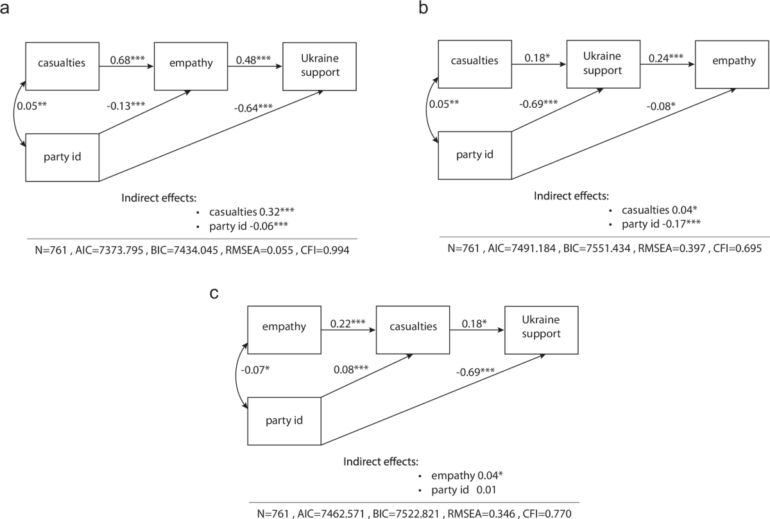From photographs of decimated buildings to military and civilian casualty counts to narratives of suffering, news media bring information about foreign conflicts to American audiences. But does this coverage actually affect public opinion about whether and how the United States should be involved in a conflict? Does it influence what Americans think about the U.S. providing military, diplomatic, and economic aid to foreign nations?
A new paper from researchers at the Annenberg Public Policy Center (APPC) of the University of Pennsylvania examines these questions and finds that media coverage of civilian casualties increases public support for U.S. involvement in conflicts by evoking empathy for the victims—but only when those victims are from allied countries.
The paper, “How civilian casualty information shapes support for US involvement in an ally country’s war effort,” by Alon P. Kraitzman, a postdoctoral fellow at APPC, Tom W. Etienne, a doctoral student at the University of Pennsylvania, and Dolores Albarracín, the Amy Gutmann Penn Integrates Knowledge University Professor and director of APPC’s Communication Science division, was published in Humanities and Social Sciences Communications.
The researchers conducted a longitudinal analysis of a large national survey and four experiments to analyze the influence of media coverage of civilian casualties on public opinion about the ongoing Ukraine-Russia war, as well as hypothetical international conflicts.
The survey “showed that the salience of civilian casualties in the Ukraine war was positively associated with a democratic justification for the war,” the authors write. The experiments manipulated information to explore different possible aspects of how information shapes public support, including the role of empathy, the different effects of information about civilian and military casualties, and how these dynamics apply to hypothetical conflicts beyond Ukraine-Russia.
The studies showed that empathy for civilian suffering is a key factor in support for U.S. involvement in a conflict. However, information about civilian casualties does not influence support when the suffering affects a nation that is not a U.S. ally.
Previous research has shown that coverage of U.S. military casualties can turn the American public against a military undertaking, and coverage of foreign civilian casualties can lead to calls for ending a U.S. military venture. This paper, says Kraitzman, “shows that coverage of casualties does not necessarily lower support for U.S. involvement. There is a more nuanced dynamic at play. Portrayals of civilian casualties can rally public support for U.S. action to protect civilians abroad.”
“These findings,” says Albarracín, “are important for media outlets and policymakers as they navigate the complex choices in how to portray and engage with international conflicts. They also teach us about the psychological forces that shape policy support in the context of war.”
More information:
How civilian casualty information shapes support for US involvement in an ally country’s war effort, Humanities and Social Sciences Communications (2025). DOI: 10.1057/s41599-024-04191-y
Provided by
Annenberg Public Policy Center of the University of Pennsylvania
Citation:
Study: Media coverage of civilian casualties in allied countries boosts support for US involvement (2025, January 6)



